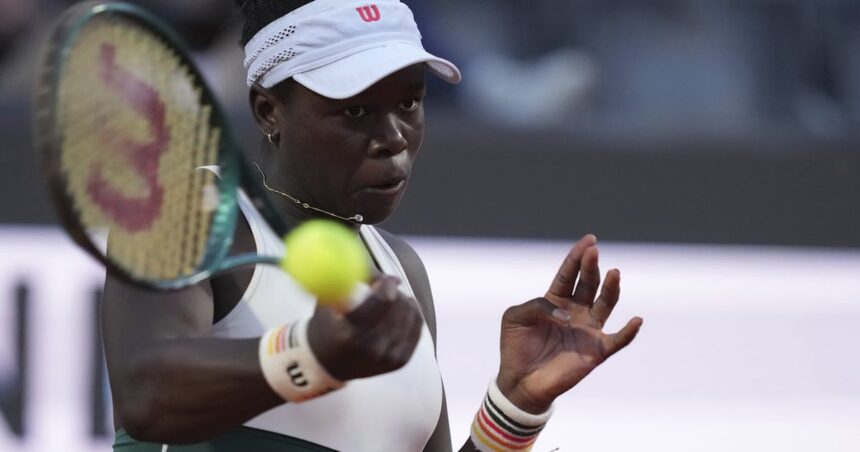The unmistakable sound of a tennis ball meeting racquet with perfect precision echoed across the clay courts of Roland Garros yesterday as Victoria Mboko, Canada’s rising tennis phenomenon, secured her place in the second round of the French Open qualifying tournament. The 18-year-old Toronto native delivered a masterclass in resilience and tactical acumen, defeating Slovenia’s Tamara Zidanšek in a match that showcased why many consider her to be Canada’s next great tennis hope.
Mboko’s victory wasn’t just another qualifying win—it represented something far more significant in the evolving narrative of Canadian tennis. In a sport historically dominated by European and American players, Canada has steadily carved out its place at the elite level, with names like Bianca Andreescu, Félix Auger-Aliassime, and Denis Shapovalov becoming household names. Now Mboko steps into this legacy, carrying with her the ambitions of a nation increasingly passionate about tennis.
“I felt the pressure early on,” Mboko admitted in her post-match interview, “but once I found my rhythm on the clay, everything clicked.” This understatement belies the remarkable composure she displayed after losing the first set, adjusting her game to counter Zidanšek’s experienced clay court strategy. The ability to adapt mid-match is often what separates promising talents from genuine contenders, and Mboko demonstrated this quality in abundance.
What makes Mboko’s journey particularly compelling is her unique playing style. Unlike many of her contemporaries who rely predominantly on baseline power, she brings a refreshing versatility to the court. Her willingness to approach the net, deploy the increasingly rare drop shot, and vary pace creates an unpredictable opponent that coaches have noted is difficult to prepare against. Tennis analyst Marie Bouchard described her game as “a fascinating blend of old-school craft and modern power—something we don’t often see in emerging players.”
The road to the main draw remains challenging. Qualifying for Grand Slam tournaments represents one of tennis’s most mentally grueling gauntlets—three consecutive victories required against opponents equally hungry for the prestigious main draw opportunity. For perspective, only 16 players from the 128-player qualifying field will earn spots among tennis’s elite at the tournament proper.
Climate change has inadvertently become part of the story at this year’s French Open. With Paris experiencing unseasonable heat waves that have baked the clay courts to unusual hardness, players have been forced to adapt to conditions that play faster than the traditional slow, high-bouncing Roland Garros surface. Mboko’s adaptability in these conditions underscores a competitive advantage in an era where environmental factors increasingly influence sporting outcomes.
The cultural significance of Mboko’s ascent extends beyond sports pages. In an era where representation matters deeply, her visibility at tennis’s highest level resonates with young Canadian players from diverse backgrounds. Tennis Canada reports a 34% increase in youth participation among communities that historically haven’t engaged with the sport, with the success of players like Mboko cited as a driving factor.
Looking ahead, Mboko faces Italy’s Martina Trevisan, a seasoned clay court specialist who reached the semifinals here in 2022. The matchup presents a fascinating contrast in styles and generations that will test whether Mboko’s fresh approach can overcome established clay court orthodoxy.
For Canadian tennis fans following from home, Mboko’s progress represents another chapter in what has become a golden era for the country’s tennis program. The institutional development work done over the past fifteen years is bearing fruit precisely as planned, with a pipeline of talent now regularly challenging at the sport’s most prestigious events.
As Roland Garros unfolds over the coming weeks, Victoria Mboko’s journey stands as a compelling reminder of tennis’s unique capacity to showcase individual brilliance within a global context. Whether she reaches the main draw or continues her development for future Grand Slams, her performance in Paris has already added another promising storyline to Canadian tennis’s remarkable ongoing renaissance.
For more perspectives on Canadian athletes making international waves, explore our CO24 Culture section, or dive deeper into emerging trends across sports and society in our CO24 Trends coverage.










